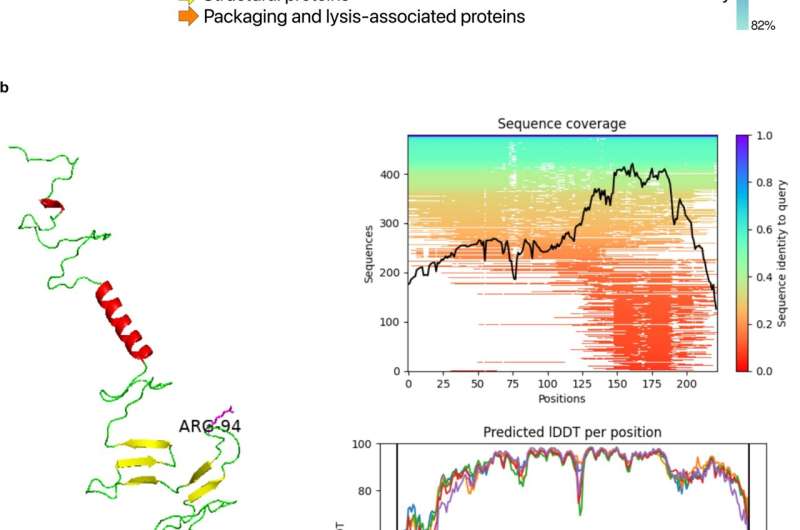
A team of doctors and researchers working at Erasmus Hospital in Belgium has successfully treated an adult woman infected with a drug-resistant bacteria using a combination of bacteriophage therapy and antibiotics. In their paper published in the journal Nature Communications, the group describes the reasons for the use of the treatment and the ways it might be used in other cases.
Bacteriophages are viruses that infect and kill bacteria. Research involving their use in human patients has been ongoing for several decades, but they are still not used to treat patients. In this new effort, the researchers were presented with a unique opportunity not only to treat a patient in need of help, but to learn more about the possible use of viruses to treat patients infected with bacteria that have become resistant to conventional antibiotics.
In this case, the patient had been severely injured by a terrorist’s bomb—she suffered multiple injuries, including damage to her leg. Doctors treating her had to remove some of the bone, which led to a bacterial infection. Unfortunately for the patient, the bacteria was Klebsiella pneumoniae, which is known to be resistant to antibiotics, and it also creates films that make it difficult for antibiotics to reach infected areas. Over the course of several years, the researchers tried multiple ways to rid the patient of the infection, to no avail. Her medical team, finding no other options, chose to pursue bacteriophage therapy. To that end, they asked for assistance from a team at the Eliava Institute in Tbilisi that has been studying bacteriophage therapy for many years.
To use a bacteriophage, a virus must be found that attacks the exact strain of bacteria behind an infection. The researchers conducted an exhaustive search and test regimen until finally coming across a virus they found in a sample of sewer water. The virus was cultured and then mixed into a liquid solution that was applied directly to the infected site on the patient’s leg. They also administered a host of antibacterial agents. The patient finally began recovering from her infection, and over a period of three years, she recovered to the point that she was not only free of the bacterial infection, but able to walk again.
Source: Read Full Article





